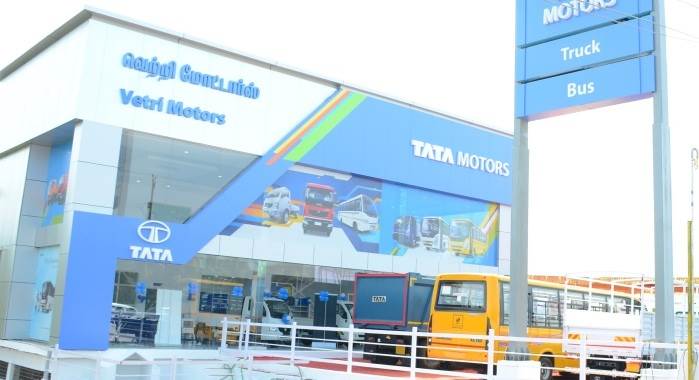‘With over 600 touch-points, Tata Motors has the largest CV network in South India.’
Tata Motors is accelerating its sales push in the South India market. RT Wasan, speaks on customer initiatives, new products and the game-plan to grow market share.
Tata Motors is accelerating its sales push in the South India market, which constitutes nearly 27% of the commercial vehicle industry in India. RT Wasan, vice-president (Sales and Marketing), Commercial Vehicle Business Unit, Tata Motors, speaks to Kiran Bajad on customer initiatives, new products and the game-plan to grow market share.
Can you detail Tata Motors’ initiatives in the southern India market?
We have been working on a number of fronts including products and network. The southern part of the country is one of the most important regions for Tata Motors. It leads in several ways and we have sets of customers who are progressively looking at new technologies and products, therefore the region has become important for us.
South India constitutes nearly 26-27% of the CV industry and in terms of GDP it is one of the strongest in the country. Tata Motors is the market leader with a 36% market share in south India.
Specifically, we have been working on the Tamil Nadu market. We have introduced five new dealerships and are in the process of adding one more in another month. We have also opened 3 more dealerships in other states. Overall, we have added 11 3S facilities and 10 1S facilities in the past 12-15 months in the south.
Another landmark in the southern region is the over-600 touch-points for our customers. No other manufacturer has half the kind of network that Tata Motors has and we also have the widest range of products in the commercial vehicle segment. To support this model range, we want to ensure we are present in almost every market.
We have also performed really well in terms of business growth with these new dealerships. Despite coming on board only in the past few months, the new dealerships are contributing almost 6% of our overall sales in the region.
Are there specific strategies that Tata Motors is implementing in the southern part of the country?
In the commercial vehicle segment, the most critical part is the product itself. We are coming up with a number of new products which will help us gain market share. For instance, the 37T rigid truck segment is one of the fastest growing. Similarly 49 tonners is another fast growing segment where we have overtaken the competition. The Ace Mega, which we have introduced recently, has begun showing good growth with 2,500 unit sales per month.
Other than products and network, we are also ensuring that our customers get the best of service. We are doing a lot in terms of enhancing customer satisfaction in the form of annual maintenance contracts, financing support, refurbishment of vehicles or aggregates. We also consciously work to build the relationship that we have with our customers as they not only ply our vehicles but remain loyal to the Tata brand. Telematics is a big factor at present and we are trying to increase our penetration by providing exceptional service to customers not just in tracking vehicles but offering information on fuel efficiency, overspeeding, sharp braking and valuable inputs to train drivers and enabling owners to get more out of the vehicle.

Ashok Leyland has a dominating share in the 37T rigid segment.
Yes, Ashok Leyland had a lead over us in the past. But today our market share reached a stage when we are overtaking Ashok Leyland on month-to-month basis. We have done this by product and performance improvements and we see customers coming back to our products. We have also introduced one more variant in the segment – the lift axle vehicle – which complements our existing product. Combined with this, we are very confident that we can sustain our market lead in the segment.
What is the update on the new Signa range of M&HCVs?
We have launched them with a tractor trailer in a phased manner. The full tractor trailer and multi-axle truck range is coming. This will further enhance our ability to gain market share in the M&HCV segment. The Signa range comes with a new cabin and many new features and is one reason why we have been able to improve our market share in the 49T segment.
Is South India the biggest market in India for the CV industry?
The largest market for the commercial vehicle industry in India is currently North India. The southern and western regions would be close to similar.
What is your near-term goal in southern India and what are the challenges?
We would like to maintain our leadership and continue to grow our market share. We are looking at an even higher market share than what we have currently.
We see every competitor as a challenge, given that they have invested in the business. We don’t want to take any of our competitors lightly; we analyze what they are doing and try to stay ahead of them. In terms of market, given that we are an all-India player, we want to ensure we maintain our position and improve on it in every market.
Last year, Tata Motors has opened Bus Zone, an exclusive 3S dealership for buses in Chennai. How is the response and are you looking open more such zones?
Currently, we only have one such dealership in the country. At the moment, we are still evaluating things. It is giving us a positive impact in the market and bus buyers are quite curious about this concept. How it plays out in the future and in other places depending upon market to market and the size of the bus market in that locations. This kind of concept will be viable in only those markets where the bus business is significant.
To what do you attribute the M&HCV sales decline in the last 3-4 months? What are your projections?
The drop in M&HCV numbers is due to a very high growth last year. The sharp drop in the cargo segment in June, July and August 2016 is due to the monsoon, freight availability and freight rates and the replacement demand slowing down. But the tipper segment, which did not have a strong growth base last year, is doing quite strongly at over 30% and continuing to grow. We see the market bouncing back. With the monsoon season over, agriculture will also pick up, the festival season is coming up and typically demand in the second half of the fiscal is better.
RELATED ARTICLES
Setrans Mobility Booster Charging top-up 25% EV range in 15 minutes
Two enterprising tech-savvy entrepreneurs Rana Roshan Singh and Vivek Ummat of Noida, Uttar Pradesh-based start-up Setra...
'Our products are proudly 100% designed and made in India'
Creatara Mobility, a New Delhi based electric two-wheeler startup, claims to have tackled various challenges in making i...
'EVs have been around for a much smaller time than ICE, so best practices are still evolving'
EV OEMs and start-ups are under pressure to reduce production costs and bring them close to ICE counterparts. Vaibhav Ku...





 By Kiran Bajad
By Kiran Bajad
 14 Oct 2016
14 Oct 2016
 8138 Views
8138 Views









